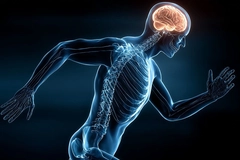
- Industry news
Industry news
Trending now
- Category news
- Reports
Trending now
- Key trends
Trending now
- Multimedia
Multimedia
Trending now
- Journal
- Events
Trending now
- Suppliers
Suppliers
Trending now
- Home
- Industry news
Industry news
Trending now
- Category news
- Reports
Trending now
- Key trends
Trending now
- Multimedia
Multimedia
Trending now
- Events
Trending now
- Suppliers
Suppliers
Trending now
Dihydrocoumarin found to inhibit longevity enzyme in yeast

Study finds that dihydrocoumarin (DHC), a compound found naturally in sweet clover and synthetically manufactured for use in foods and cosmetics, inhibits the activity of Sir2p and SIRT1, forms of sirtuin found in yeast and humans, respectively.
19/12/05 A common additive found in food and cosmetics has been found to inhibit the activity of sirtuins, enzymes associated with lifespan control in yeast and other organisms, according to a new study led by researchers at the University of California, Berkeley.
The study, published Friday, Dec. 16, in the online journal Public Library of Science (PLoS) Genetics, found that in lab tests, dihydrocoumarin (DHC), a compound found naturally in sweet clover and synthetically manufactured for use in foods and cosmetics, inhibited the activity of Sir2p and SIRT1, forms of sirtuin found in yeast and humans, respectively.
Increased sirtuin activity is known to increase longevity in yeast, roundworms and fruit flies. The opposite effect in yeast has also been shown when the sirtuin enzyme is either deleted or reduced - the lifespan decreases by as much as 30 percent.
DHC is added as a flavoring agent to a wide variety of foods, including soft drinks, yogurt and muffins, and is used as a common fragrance in cosmetics, lotions and soaps. It can be found in concentrations as high as 100 parts per million in such foods as gelatins, puddings and frozen dairy products.
Notably, there are five forms of sirtuins found in yeast, and seven forms of sirtuin in humans. "There is good reason to think that DHC would inhibit at least some of the functions of some of the other forms of sirtuins," said Jasper Rine, professor of genetics at UC Berkeley's Department of Molecular and Cell Biology and co-author of the paper.
The UC Berkeley researchers collaborated with Dr. Eric Verdin, associate director and senior investigator at the Gladstone Institute of Virology and Immunology, which is affiliated with UC San Francisco. Verdin, who is also a professor of medicine at UCSF, is an expert on mammalian sirtuin enzymes.
Sirtuin enzymes are histone deacetylases, which modify the structure of chromatins, complex substances made up of DNA and protein. Histone deacetylases keep chromatins packed and tightly coiled in such a way that enzymes cannot activate the DNA, keeping the gene from being expressed. This type of gene "silencing" is considered epigenetic, which means that it effectively controls the expression of a gene without altering the actual DNA molecules.
Andrew Olaharski, UC Berkeley post-doctoral researcher in environmental health sciences and lead author of the paper, noted that toxicology testing routinely focuses on an agent's ability to cause DNA mutations, chromosome alterations, or cell death, but does not currently test for chemical-induced epigenetic changes. While epigenetic changes do not alter the DNA structure, they can impact gene expression that may lead to disease.
To screen for possible sirtuin inhibitors, the researchers used haploid strains of Saccharomyces cerevisiae yeast. The haploid yeast strains, like gametes or sex cells, contained only one set of chromosomes, and would not normally grow on the medium prepared in the lab.
However, if the haploid yeast strains were exposed to an agent that disrupted sirtuin activity, epigenetic silencing would be reversed, the strains would mate to become diploid cells, and the yeast would grow on the medium. Of the compounds tested thus far, DHC was the first environmental agent to have shown the ability to inhibit sirtuin enzymes.
The researchers further tested the role of DHC in apoptosis, a process that causes a cell to die. They exposed DHC to human white blood cells and found that increasing concentrations of the compound led to increases in cell toxicity, apoptosis, and the stability of p53, a tumor-suppressing protein associated with apoptosis.
Other co-authors of the paper are Brett Marshall, a research associate at the Gladstone Institute; Joshua Babiarz, a graduate student at UC Berkeley's Department of Molecular and Cell Biology; and Luoping Zhang, a researcher at UC Berkeley's School of Public Health.
http://www.medicalnewstoday.com/medicalnews.php?newsid=35074










